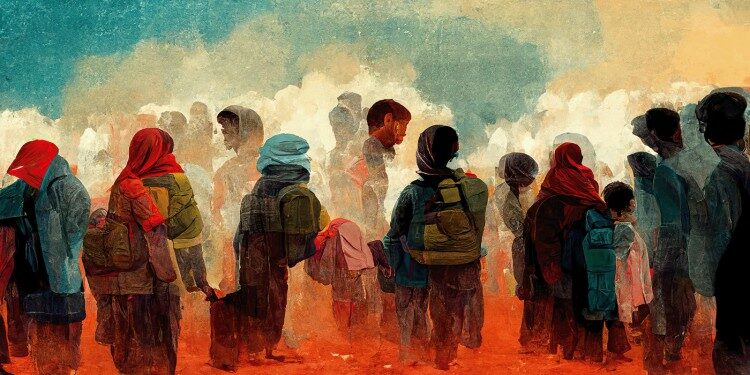In news– World Bank has released the World Development Report 2023 recently.
What is the World Development Report?
- It is an annual report published since 1978 by the International Bank for Reconstruction and Development or World Bank.
- Each WDR provides in-depth analysis of a specific aspect of economic development.
Key findings-
Following are the key findings of the report-
- According to the report, the share of working-age adults will drop sharply in many countries over the next few decades.
- However, migration can be a unique opportunity for economies and people as well as meet the growth needs of both origin and destination countries.
- As populations across the globe age at an unprecedented pace, the global competition for workers and talent will intensify.
- Many countries will be increasingly reliant on migration to realise their long-term growth potential.
- The report discussed the migration trade-offs using a “Match-Motive Framework”.
- The “match” aspect is grounded in labour economics and focuses on how well migrants’ skills and related attributes match the needs of the destination countries and “motive” refers to the circumstances under which a person moves in search of opportunity.
- This determines the extent to which migrants, origin countries and destination countries gain from migration: The stronger the match, the larger the gains.
- By combining “match” and “motive,” the framework identified policy priorities for countries of origin, transit and destination and the international community.
- It also discussed how bilateral, plurilateral, or multilateral initiatives and instruments could improve the policy response.
- Spain, with a population of 47 million, is projected to shrink by more than one-third by 2100, with those above age 65 increasing from 20 per cent to 39 per cent of the population.
- Countries like Mexico, Thailand, Tunisia and Türkiye may soon need more foreign workers because their population is no longer growing.
- Meanwhile, most low-income countries are expected to see rapid population growth, putting them under pressure to create more jobs for young people.
- About 184 million people worldwide, including 37 million refugees, lack citizenship in the country in which they live, according to the report.
- Less than half, or 43 per cent, live in low- and middle-income countries.
- It further said that migration issues are becoming even more widespread and urgent due to severe divergences between and within countries— in terms of real wages, labour market opportunities, demographic patterns and climate costs.
What does the report say about India?
- According to the report, Indian workers see a 120% rise in their incomes outside India, while internal migration within India will only add about 40% to personal incomes.
- A low-skilled Indian worker is likely to see a whopping 500 percent rise in income in the United States.
- The United Arab Emirates is the next favourite destination for low-skilled workers, who can earn 300 percent more than in India.
- India is the biggest beneficiary of remittances in the world, having crossed the $100 billion-mark in 2022.
Suggestions-
- Origin countries should make labour migration an explicit part of their development strategy, the report suggested.
- Destination countries should encourage migration where the skills migrants bring are in high demand, facilitate their inclusion and address social impacts that raise concerns among their citizens, it further said.
- The World Bank also urged for international cooperation and multilateral efforts to strengthen the match of migrants’ skills with the needs of destination societies.
- The report used data-driven and evidence-based examples and assessment of trade-offs, showing how migration can work for development.
- These policies can help harness economic opportunities and mitigate the difficulties and risks that migrants face, the paper further said.















